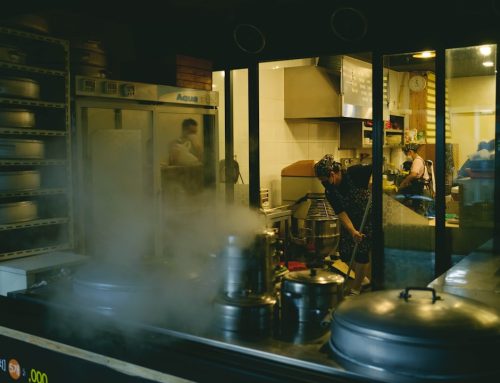Steam Detailing in Urban vs Regional Areas: Business Tips for Each
The distinction between urban and regional markets is significant, particularly in the context of service delivery and customer expectations. Urban areas are typically characterised by a dense population, a fast-paced lifestyle, and a diverse demographic. This environment fosters a competitive market where consumers have access to a wide range of services and products.
In contrast, regional areas often exhibit a more relaxed pace of life, with smaller populations and a tighter-knit community. Here, customer loyalty can be more pronounced, but the range of services available may be limited. Understanding these differences is crucial for businesses aiming to operate effectively in both settings.
Urban customers may prioritise convenience and speed, often seeking services that fit into their busy schedules. They are likely to be more tech-savvy and responsive to digital marketing strategies. Conversely, regional customers may value personal relationships and trust, often preferring to engage with local businesses that understand their specific needs.
This fundamental understanding of market differences lays the groundwork for tailoring services and marketing strategies effectively.
Summary
- Urban and regional areas have different consumer behaviours and needs
- Services should be tailored to meet the specific needs of urban and regional customers
- Marketing strategies should be adapted to the unique characteristics of urban and regional areas
- Overcoming challenges such as competition and infrastructure differences is crucial in urban and regional areas
- Building a strong customer base requires understanding and catering to the preferences of urban and regional customers
Tailoring Services to Urban vs Regional Customers
When it comes to tailoring services, businesses must consider the unique preferences and behaviours of urban and regional customers. In urban areas, the demand for quick and efficient services is paramount. Customers often seek out businesses that can provide immediate solutions, whether it be through express service options or online booking systems that facilitate convenience.
For instance, a car detailing service in an urban setting might offer same-day appointments or mobile services that come directly to the customer’s location. In contrast, regional customers may appreciate a more personalised approach. They often prefer businesses that take the time to understand their specific needs and provide tailored solutions.
This could involve offering bespoke packages or loyalty programmes that reward repeat customers. Additionally, regional businesses might benefit from community engagement initiatives, such as sponsoring local events or collaborating with other local enterprises, which can help build trust and rapport within the community.
Marketing Strategies for Urban vs Regional Areas

Marketing strategies must be adapted to resonate with the distinct characteristics of urban and regional markets. In urban areas, digital marketing plays a pivotal role. Social media platforms, search engine optimisation (SEO), and targeted online advertising can effectively reach a diverse audience.
Urban consumers are often influenced by online reviews and social proof, making it essential for businesses to maintain a strong online presence and engage with customers through various digital channels. Conversely, marketing in regional areas may rely more heavily on traditional methods such as word-of-mouth referrals, local newspapers, and community bulletin boards. Building relationships with local influencers or community leaders can also enhance visibility and credibility.
Additionally, regional marketing strategies should emphasise the business’s commitment to the local community, showcasing how it contributes to the area’s economy and culture. This approach not only attracts customers but also fosters loyalty among existing ones.
Overcoming Challenges in Urban vs Regional Areas
Both urban and regional markets present unique challenges that businesses must navigate effectively. In urban areas, competition is fierce, with numerous businesses vying for the same customer base. This saturation can lead to price wars and a constant need for innovation to stand out.
Businesses must continuously adapt their offerings and marketing strategies to remain relevant in such a dynamic environment. On the other hand, regional areas may face challenges related to limited resources and infrastructure. Businesses in these regions might struggle with access to suppliers or face higher transportation costs due to their geographical location.
Additionally, attracting skilled labour can be more difficult in rural settings where job opportunities may be fewer. To overcome these challenges, businesses must leverage their unique strengths—such as community ties in regional areas or technological advancements in urban settings—to create competitive advantages.
Building a Strong Customer Base in Urban vs Regional Areas
Building a robust customer base requires different approaches in urban and regional contexts. In urban areas, businesses can benefit from implementing loyalty programmes that incentivise repeat purchases and encourage customer retention. Engaging with customers through social media platforms can also foster a sense of community and keep them informed about new offerings or promotions.
In regional areas, establishing trust is paramount. Businesses should focus on building relationships with customers through personalised service and consistent communication. Hosting community events or participating in local fairs can enhance visibility and create opportunities for direct engagement with potential customers.
By becoming an integral part of the community fabric, businesses can cultivate a loyal customer base that values their contributions beyond just the products or services offered.
Managing Costs and Expenses in Urban vs Regional Areas

Cost management strategies must be tailored to the specific challenges faced by businesses in urban versus regional areas. In urban settings, high rent prices and operational costs can significantly impact profitability. Businesses must carefully analyse their expenses and explore ways to optimise operations without compromising service quality.
This could involve utilising technology to streamline processes or negotiating better terms with suppliers. In contrast, businesses in regional areas may face different cost pressures, such as higher transportation costs due to distance from suppliers or limited access to certain resources. To manage these expenses effectively, regional businesses should consider forming partnerships with local suppliers or collaborating with other businesses to share resources.
Additionally, leveraging local talent can help reduce labour costs while fostering community engagement.
Leveraging Technology for Efficiency in Urban vs Regional Areas
Technology plays a crucial role in enhancing operational efficiency across both urban and regional markets. In urban areas, businesses can utilise advanced software solutions for inventory management, customer relationship management (CRM), and online booking systems that cater to the fast-paced lifestyle of urban consumers. Implementing mobile payment options can also streamline transactions and improve customer satisfaction.
For regional businesses, technology can help bridge gaps caused by geographical limitations. Online platforms can facilitate e-commerce opportunities, allowing regional businesses to reach customers beyond their immediate vicinity. Additionally, utilising social media for marketing purposes can enhance visibility without incurring significant costs.
By embracing technology tailored to their specific needs, both urban and regional businesses can improve efficiency and drive growth.
Adapting to Local Regulations and Policies in Urban vs Regional Areas
Navigating local regulations and policies is essential for businesses operating in both urban and regional areas. Urban environments often have stricter regulations regarding zoning, health codes, and environmental standards due to higher population density and potential impacts on public health. Businesses must stay informed about these regulations to ensure compliance while also advocating for policies that support their operations.
In regional areas, regulations may differ significantly due to local government structures and priorities. Businesses must engage with local authorities to understand the specific requirements that apply to their operations. This engagement not only ensures compliance but also provides an opportunity for businesses to influence policy decisions that could benefit the local economy.
By being proactive in understanding and adapting to local regulations, businesses can mitigate risks and position themselves for long-term success. In conclusion, understanding the differences between urban and regional markets is vital for tailoring services effectively, implementing appropriate marketing strategies, overcoming challenges, building strong customer bases, managing costs, leveraging technology, and adapting to local regulations. By recognising these distinctions and adapting accordingly, businesses can thrive in both environments while meeting the unique needs of their customers.
FAQs
What is steam detailing?
Steam detailing is a car cleaning and detailing method that uses high-pressure steam to clean and sanitize the interior and exterior of vehicles. It is an eco-friendly and efficient way to remove dirt, grime, and stains from cars.
What are the differences between urban and regional areas for steam detailing businesses?
In urban areas, there is typically higher competition and a larger customer base, but also higher operating costs and more stringent regulations. In regional areas, there may be less competition and lower operating costs, but a smaller customer base and potential challenges in reaching customers in remote locations.
What are some business tips for steam detailing in urban areas?
Some business tips for steam detailing in urban areas include focusing on convenience and speed to cater to busy urban customers, offering mobile services, targeting specific customer segments such as corporate fleets or ride-sharing drivers, and investing in marketing and branding to stand out in a competitive market.
What are some business tips for steam detailing in regional areas?
Some business tips for steam detailing in regional areas include building strong relationships with local customers and businesses, offering a wider range of services to cater to a smaller customer base, leveraging word-of-mouth marketing and local advertising, and considering partnerships with other local businesses to expand reach.
Subscribe to the newsletter
Subscribe to us for tips, events and promotions.






